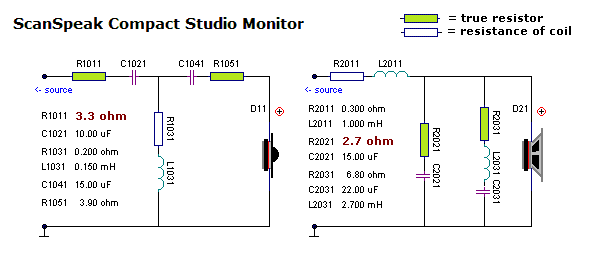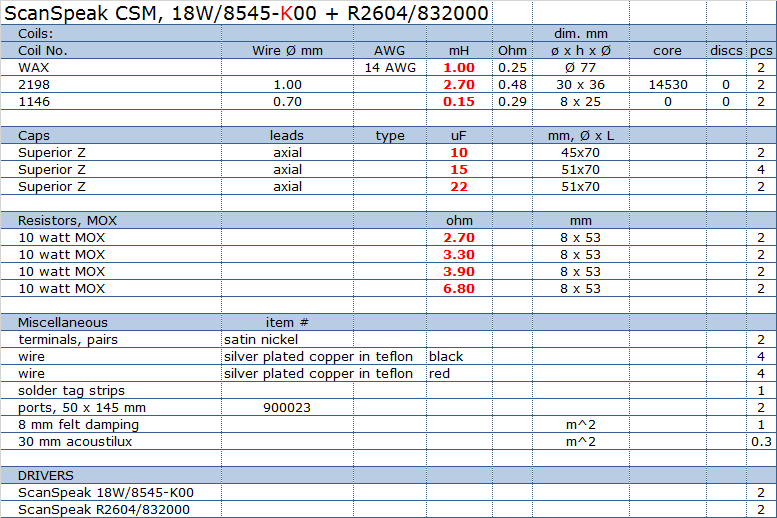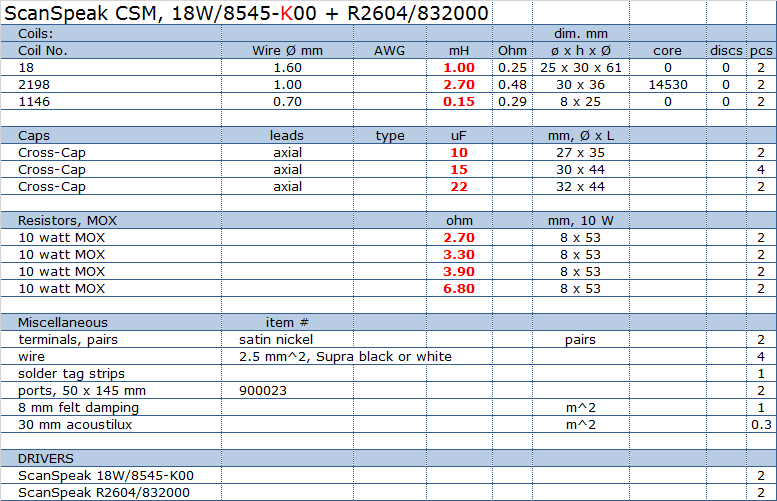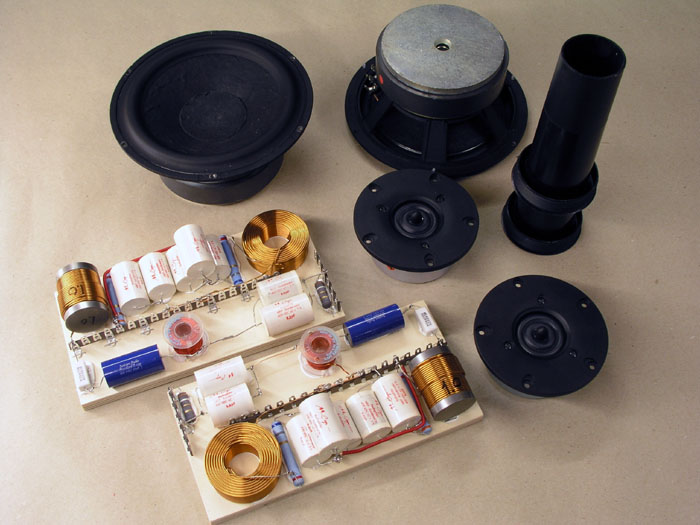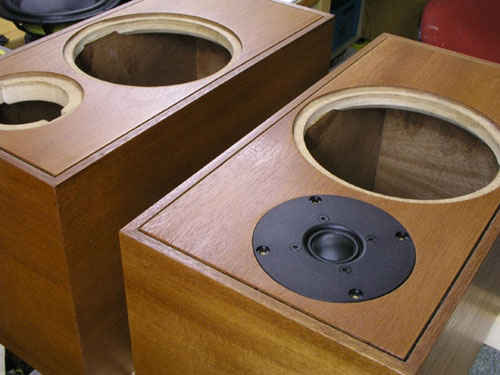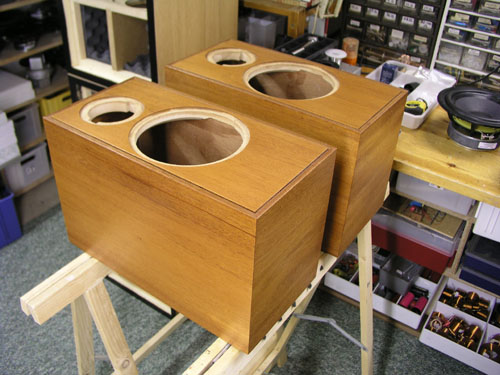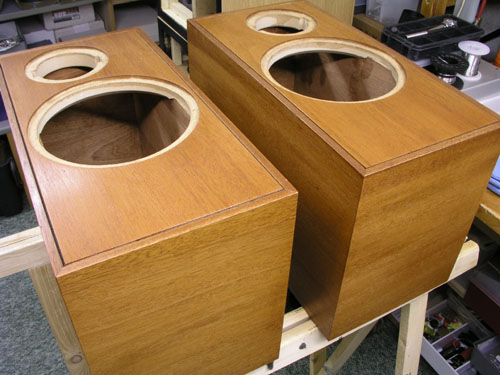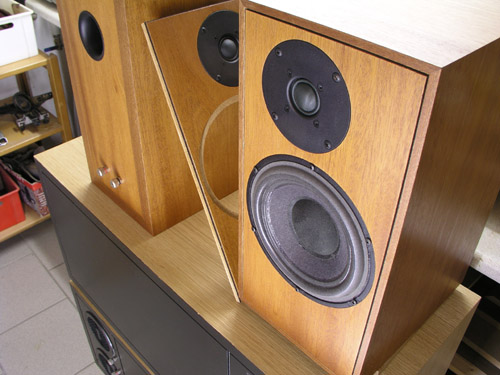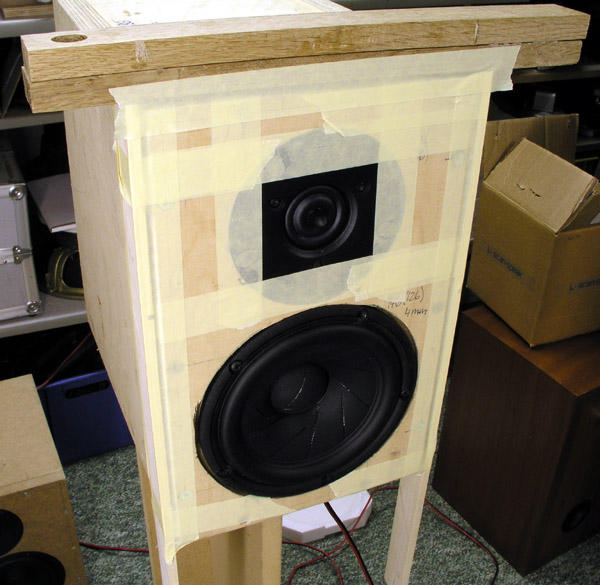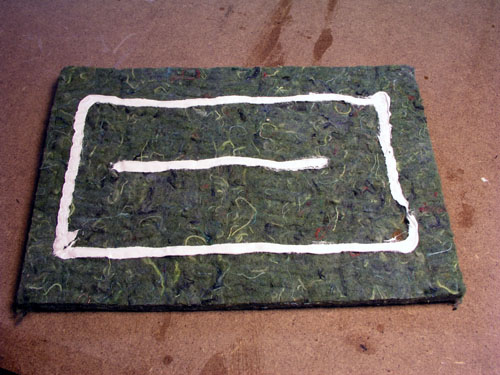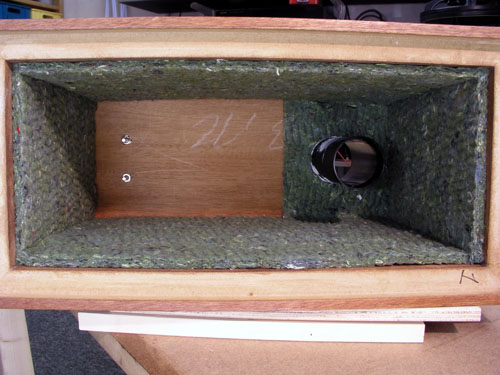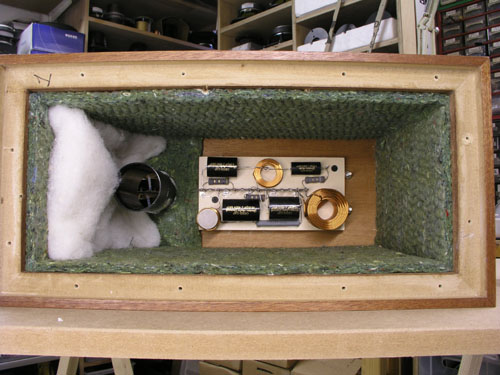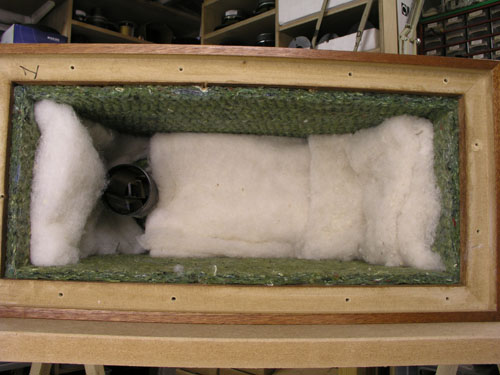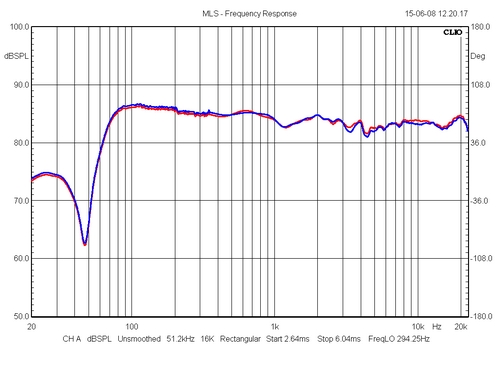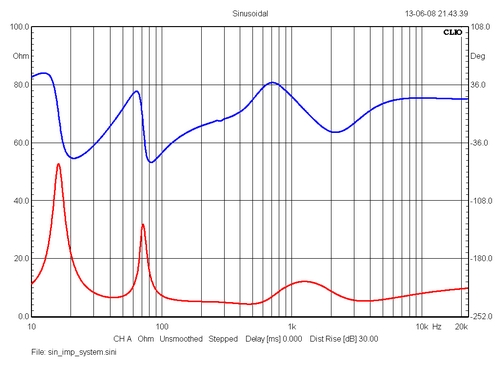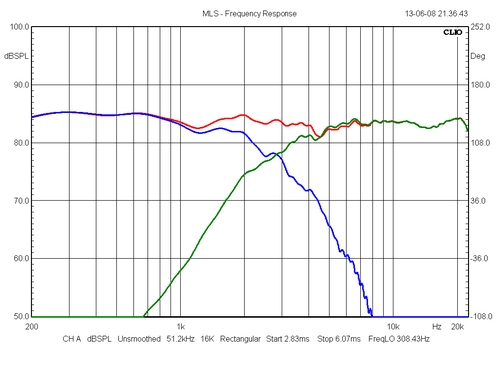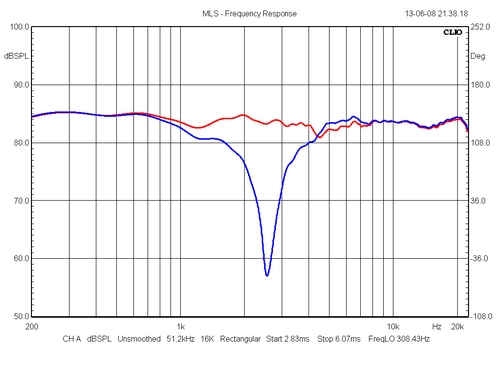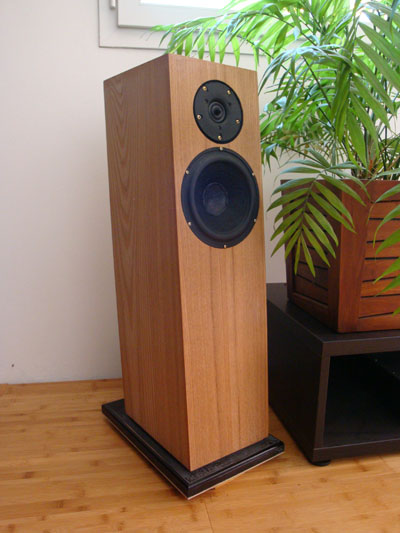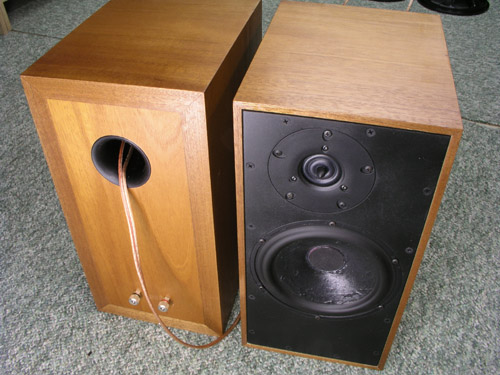 When the 18W/8545-00 and -K00 drivers
came about some 15 years ago, everybody
was impressed from the design, the
"ugly" looking carbon-paperpulp
membranes and the huge magnets. The rather slim
chassis allows a 145 cm^membrane area from an
overall 177 mm diameter, quite impressive. All
18W/85nn have copper plated pole piece, symmetric
drive and vented centre pole piece. The huge
magnets and low Qt suggests drivers suitable for 10-15 liter
cabs and a few small monitor designs were launched immediately
after the release of the drivers. Since then numerous designs
have been produced and often we see the classic 18W/8545 driver
used in up to 24 liter vented or transmission line constructions
despite really suited for smaller cabs. Why build small speakers when we can have bigger sound for the same money from a bigger cabinet? Well, the answer is simple: Because sometimes they just must to be small due to how they will fit in with a given idea about how our living rooms are going to look. WAF is high from small speakers. Even if a slim floorstander doesn't not take up more floor space than a mini on a stand, the WAF is higher for the latter. Not much we can do about it. Thus this Compact Studio Monitor. "Studio" because it started with the 8542 driver for studio use, by request from a Norwegian studio engineer. How small is small? Well, the W15CY001/OW1 is small, the Ellam a little bigger (10 litres) and delivers a bass performance leaving the W15 behind. When we add 2-3 litres we may have room for a 6-6Ĺ" driver, a significant increase in membrane area and we can get a decent bass response down to 50 Hz. Comparing 18W/8545-00 to 15W/8530-G00 in 13 litres and 10 litre respectively, we get this picture: The 15W/8530K00 may produce a slightly more extended bass response, but at the expense of ~2 dB efficiency. Listening to the bass response from W15W/10 litres and the 18W/13 litres - side by side - leaves no doubt which driver is most comfortable in this area. I'm not talking about midrange quality here, only bass. The drivers: Download specs here: ScanSpeak R2604/832000 ScanSpeak 18W/8545K00
SPEAKER KIT, PARTS LIST
Cabinet Construction
If you want deeper
bass, increase volume to 18-22 litre and tune port accordingly. 12.7
litre only if it has to be really small. Tweeter placement
10 mm felt material is used as basic damping. Make sure the damping sheets are firmly glued to the panels. Part of rear panel is left open for mounting the crossover around terminals. Even i a 13 litre cabinet we have to carefullt consider size and placement of crossover.
No damping material on front panel. Above the vent a piece of MDM3/Acoustilux is placed as shown on photo. Place damping material on top of crossover to dampen reflections from the board and finally a piece of MDM3 at the bottom of cabinet as shown.
Response from builders
Hi Troels Hi Adelino. Thanks for taking time to respond to the CSM. I'm pleased it seems to work out as intended and thanks asking about tweeter placement. It made me do the tests on tweeter placement - and the kits generally more versatile. The R2604/832000 is an easy driver. The "ugly" cones should look really excellent with leather as they did on the 1st generation Amati from Sonus Faber.
|

